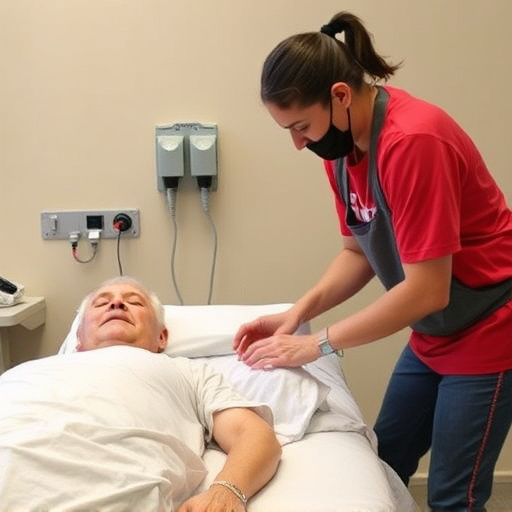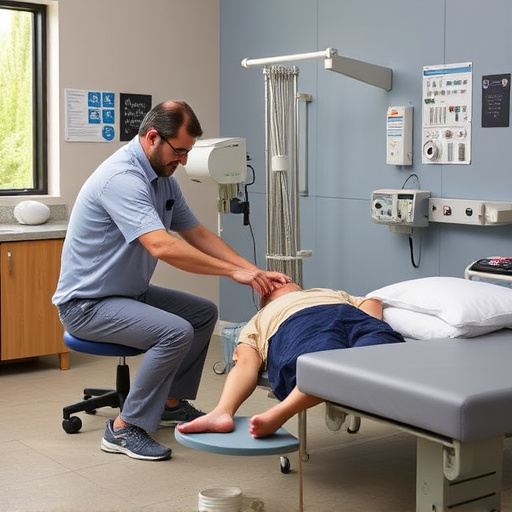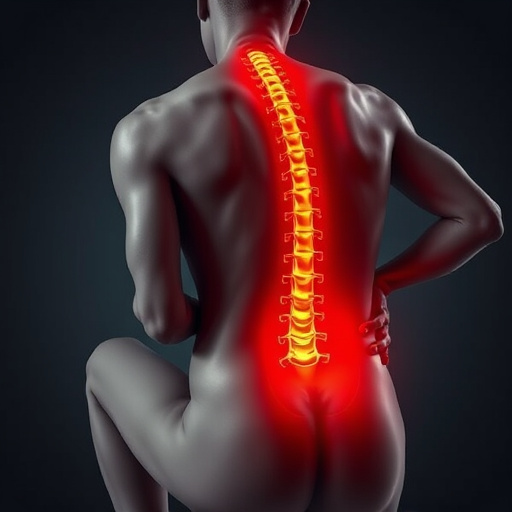Spine injury workers comp treatment focuses on personalized plans including diagnostic imaging, physical therapy, chiropractic care, and tailored exercises. Multidisciplinary teams assess severity and adjust protocols based on progress tracking using standardized metrics and patient feedback. This dynamic approach optimizes recovery for herniated discs, whiplash, and other spine injuries, supporting workers' compensation claims.
“A spine injury can be a life-altering event, but understanding your rights under workers’ compensation (Workers Comp) is crucial for navigating the path to recovery. This comprehensive guide delves into the intricate world of Spine Injury Workers Comp Treatment Plans, offering insights on how these personalized protocols are designed and implemented. From securing your legal entitlements to tracking progress, we explore each step, ensuring you’re equipped with knowledge. Learn how a tailored treatment plan adjusts to your unique needs, fostering healing and a successful return to work.”
- Understanding Spine Injury Workers Comp Rights
- Creating a Personalized Treatment Plan
- Tracking Progress and Adjusting the Protocol
Understanding Spine Injury Workers Comp Rights

When dealing with a spine injury on the job, understanding your rights under workers’ compensation (workers comp) is crucial. In many jurisdictions, workers who suffer such injuries are entitled to medical benefits, including access to specialized care and treatments like physical therapy and chiropractic adjustments. This process aims to facilitate recovery and help individuals manage their pain effectively.
One of the key aspects of a workers comp treatment plan for spine injuries is ensuring proper diagnosis and comprehensive care. This may involve diagnostic imaging, consultations with specialists, and tailored therapeutic exercises designed to offer headache relief and improve mobility. Personal injury chiropractic services can play a significant role in this journey, offering hands-on adjustments and guidance on posture and movement to support long-term healing.
Creating a Personalized Treatment Plan

When a worker sustains a spine injury on the job, developing a personalized treatment plan is crucial for their recovery and return to work. This process involves a multidisciplinary team, including physicians, physiotherapists, and sometimes specialists like neurologists or orthopaedic surgeons. The first step is to assess the extent of the injury, which can range from mild to severe, impacting various areas of the spine. This assessment guides the creation of an individualized plan tailored to address specific symptoms and goals.
For instance, a worker with chronic lower back pain and sciatica might receive a treatment regimen that includes physical therapy focusing on core strengthening and flexibility exercises, along with shockwave therapy for pain management. The plan is dynamic, allowing adjustments based on progress or setbacks, ensuring the most effective care throughout the recovery journey towards eventual workers’ compensation claims resolution.
Tracking Progress and Adjusting the Protocol

Tracking progress is a crucial aspect of spine injury workers comp treatment. Healthcare professionals regularly assess patients’ conditions using standardized metrics and patient feedback. This ongoing evaluation helps determine if the personalized treatment plans are effective or need adjustments. If a herniated disc treatment shows limited improvement, for instance, doctors might modify the protocol to include additional physical therapy sessions or switch to different medication. The goal is to tailor the care precisely to each patient’s needs, ensuring optimal recovery.
Similarly, whiplash treatment regimens are not static. As patients progress, their treatments may evolve as well. Regular communication between the patient and healthcare providers is essential to ensure any adjustments made to the protocol are based on accurate assessments of pain levels, mobility, and overall well-being. This dynamic approach to spine injury workers comp care ensures that personalized treatment plans remain relevant and effective throughout the recovery journey.
A comprehensive spine injury workers comp treatment plan, tailored to individual needs and regularly monitored for progress, is the cornerstone of effective recovery. By understanding one’s rights and working closely with healthcare professionals, injured workers can navigate their journey towards healing efficiently. Through personalized care and adaptive protocols, those affected by spine injuries can regain functionality and improve their overall quality of life.














